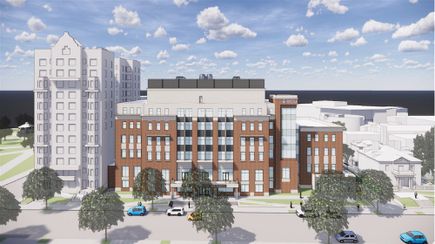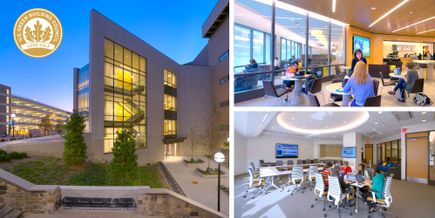University of Nebraska-Lincoln Opens the Doors to a New Era of Engineering
Share

Kiewit Hall, the University of Nebraska-Lincoln’s new interdisciplinary hub for engineering education and the iconic centerpiece of the College of Engineering campus precinct, opened to students on January 22. The 182,000 SF building, designed by Ballinger with Clark & Enersen, embodies the university’s commitment to developing the Complete Engineer—a engineer with exceptional technical, leadership, and communication skills.
In an interview with Nebraska Today, College of Engineering Dean Lance C. Perez expressed deep pride in the building stating, “Very few people really know what engineers do, and what they do really is important and cool. It impacts every person every day. We should be proud of that and proud to put it on display and celebrate it.”
Kiewit Hall features flexible, technology-enabled classrooms for active learning, instructional laboratories for hands-on learning, group study rooms for collaboration, and administrative offices that support engineering students’ academic life. Foundational elements like the Garage—a state-of-the-art interdisciplinary maker space—combined with dedicated spaces for student groups support the school’s mission of molding the open-minded, innovative engineers of the future.
This educational mission is reinforced by the qualities inherent within the building’s design. A centrally located, multi-story stair clad in wood serves as the main orientation element, carrying students upward through the various spaces that will contribute to making them a Complete Engineer. Abundant transparency provides naturally lit spaces throughout the complex, increases accessibility, and connects occupants to a newly established green quad. This quad engages adjacent residence halls and creates campus identity for the engineering precinct.
Located near central socializing spaces, the Kiewit Café offers a healthy menu and inviting environment for all members of the campus community to experience the newly transcendent experience of being part of the University of Nebraska’s Engineering program.
The project is anticipated to achieve both WELL and LEED certifications.
Read more from Nebraska Today
Photo Credit: Craig Chandler



